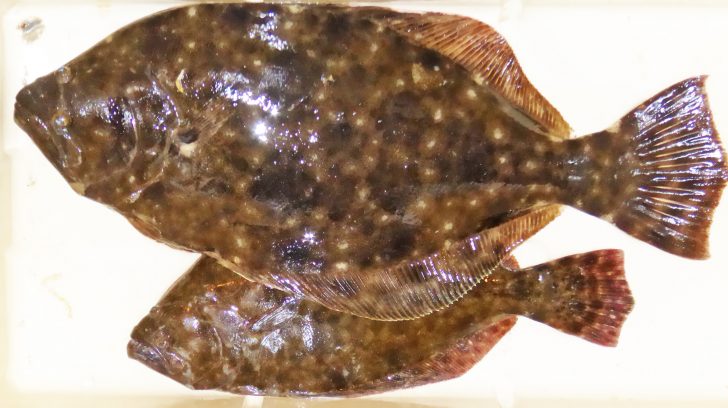There have been studies done by the South Carolina Department of Natural Resources on our Flounder population.
The reports and statements made by some of the individuals involved with the study speculate that we are losing our Flounder due to over fishing by sport fishermen and are contemplating banning Flounder fishing by sport fishermen.
I have read articles put out by newspapers, DNR and other magazines. I have seen one article state to the public regarding Flounder fishing that there are 400,000 licensed fishermen in the state of South Carolina.
Of course, after the public reads this statement, the novice would assume that there are 400,000 fishermen fishing for Flounder.
If the statement was broken down correctly, it should have explained that the majority of licensed fishermen in the state of South Carolina are freshwater fishermen and do not fish inshore, which is saltwater, and the location where our Flounder reside.
The other large portion of fishing licenses for saltwater are utilized by offshore fishermen, and since the majority of South Carolina citizens do not live ocean-side, a trip to the inshore waters is usually very limited.
This is because most of South Carolina’s sport fishermen, and what we refer to as the “weekend warrior,” are working class citizens and commonly work 40-hour weeks, leaving them very little time during their time off, usually the weekends, to go fishing, especially if they have to utilize their time cutting the grass, doing home repairs, weekend cleaning, laundry, etc.
There is not much time left for them to perfect or specialize in many fishing techniques. Unfortunately, the majority usually grab a rod, a reel, a couple of double-hook bottom rigs and a frozen tub of Shrimp, cast out and hope for the best.
If one of them accidentally catches a Flounder on a piece of frozen Shrimp, it is usually considered a great piece of luck.
But, now that this is in the open and made easier to understand by the public, let’s review the thought of our Summer Flounder or Southern Flounder diminishing in our coastal waters.
You may be wondering, what is the difference between a Summer Flounder and a Southern Flounder?
They are two different species of Flounder.
The reason DNR sits at boat landings and asks sport fishermen questions about species of fish is to obtain information that they are not capable of gathering without the help of fishermen
Southern Flounder reside in South Carolina year-round, and Summer Flounder, hence the word “summer,” migrate to deeper water and usually go south during our winter months and return in the spring.
I personally have not found any indication of the Southern Flounder diminishing, but one of the differences between DNR and professional sport fishermen is that DNR are not fishermen.
In fact, the reason DNR sits at boat landings and asks sport fishermen questions about species of fish is to obtain information that they are not capable of gathering without the help of fishermen.
Unfortunately, in most cases, like explained above about the weekend warrior, is when they are asked, have they caught any Flounder? The answer is usually no.
It is not because the Flounder are not there. It is because they are not targeting the Flounder.
DNR usually obtains its specimens by either shocking the water in easy, accessible locations, or dragging a sane net.
If they do not find Flounder in their sample locations, then I guess there’s just no Flounder! But, sport fishermen that have trained themselves to find and fish for Flounder have had no issues catching them.
Flounder eat Finger Mullet, live Shrimp, Mud Minnows and are an ambush predator. It takes patience and specialty rigging to target and catch these fish, using a number of techniques that have been developed by fishermen for decades.

So, why would it be difficult to find Flounder in locations where they were abundant at one time?
There can be a number of reasons for this, and one of them being habitat loss due to over-dredging and over-building. The Charleston Harbor is a prime victim of exactly that.
The domino effect that is caused by these actions is as follows: when you remove sediment aggressively to maintain or increase water depths, what you’re also removing are habitats that are in the soil, housing crustaceans and microorganisms that feed other species of life, for example, fish in their juvenile stage, Shrimp, Mullet and Menhaden.
When these species cannot find the food they are accustomed to, their numbers are reduced greatly, and they have to move to different locations to find food and a home either for the season or for the rest of their lives.
The Flounder, along with other species of fish, move to locations and congregate in larger numbers where their food supply is plentiful.
So, if their food is no longer available in a location where we were finding them, then the Flounder will not be found.
This does not mean that the Flounder have died off or have been overfished. This means that the Flounder would have to move to a new location that has the requirements they need to survive.
As a professional sport fishermen, I follow the food and habitats that have not been affected by the over-dredging and over-development, severe pollution, and in some cases, over-fishing, but not by sport fishermen, but by gigging boats.
I personally have nothing against gigging for Flounder, but in this day and age, it has not been hard to find in some form of social media photographs of gig boats with 30 to 40 Flounder lined up on their boat, usually taken from one flat.
This can have a devastating effect in a small habitat. After all, it’s not like you back up a truck from Wal-Mart and restock them. You could put 20 fishermen with rod and reel in the same flat and not come close to the amount of fish obtained by the gig boat.
Other ways to damage habitat that have been overlooked and part of over-development are projects trying to build new boat marinas in prime habitat in estuaries where fish species spawn and raise their young. There needs to be a common ground when it comes to coastal development.
We have to maintain some conservation wetlands and waterways for the wildlife to prosper. After all, if we develop our whole entire coast and privatize it or commercialize it, what is left for the public or for the marine
The proof is in the pudding. If they are so concerned about these species of fish, then why do you keep allowing permits for development
I find it interesting that DNR seems to be so concerned about conservation and our Southern Flounder. In fact, I am happy that they are.
But, the proof is in the pudding. If they are so concerned about these species of fish, then why do you keep allowing permits for development that would cause the destruction or a severe impact on these species’ life cycle and way of life?
Of course, I have personally heard some of your professional opinions that the development in these habitats, including the prop wash of 40-foot vessels jetting out the shallows in some of the locations that are being developed, would not have a devastating effect on habitat.
There are no stronger conservationists than sport fishermen
As I chuckle, I could only remember a statement that I have made before during an interview by local media on the subject. I said, “It would be like running a rotor tiller through your flower garden.”
There are no stronger conservationists than sport fishermen. After all, if we do not take care of our wildlife and their habitats, there is no sport fishing, and we would have to watch the memories and the future fade away.
No more smiles on children’s faces or anyone’s face that would have enjoyed the sport of fishing. On behalf of our public, we ask SCDNR to continue doing their job, but do it correctly and cover all aspects of this subject.
Like I always say, until next time, good luck out there and have fun fishing!
To view some fishing adventures, go to my YouTube Channel Fishing With Jiggin Jerry.




